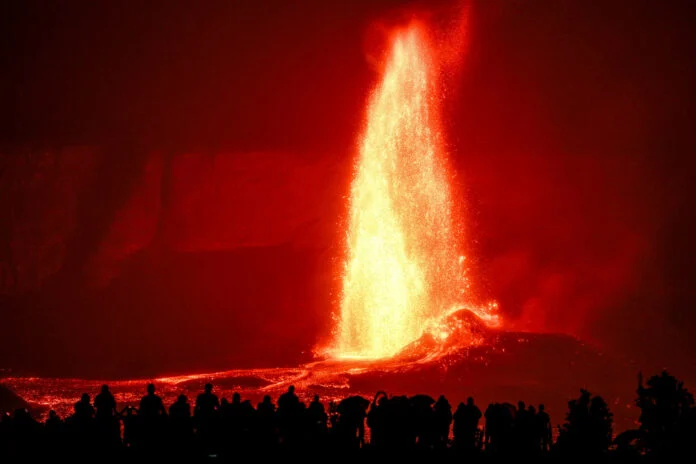Volcanic eruptions are more than just destructive natural spectacles that disrupt air travel or damage property. At their most extreme, they can claim hundreds or even thousands of lives, smothering entire regions in deadly pyroclastic flows and ash. Beyond the immediate devastation, they can also drastically alter regional—and even global—climates, leading to ecosystem collapse and mass extinctions.
Now, researchers in Australia believe they’ve uncovered a major clue to what triggers these catastrophic events: colossal, mysterious rock masses buried nearly 2,000 kilometers beneath the Earth’s surface.
The “Continents” Beneath Our Feet
These gigantic 3D structures are as large as entire continents and tower up to 100 times higher than Mount Everest. They sit at the base of the Earth’s mantle, just above the molten outer core, in a zone where the pressure is so intense that the planet’s elements are compressed to extreme levels.
Scientists believe these massive formations may act like priming fuses—starting points for plumes of molten rock that rise toward the Earth's surface. When these plumes finally break through, they erupt with such force that they can alter life as we know it, spewing lava, gas, and rock fragments across vast areas.
Planetary Consequences
According to the research team, super-eruptions fueled by these plumes could drive rapid climate shifts, trigger mass extinctions, and amplify global warming through the release of carbon dioxide and other greenhouse gases.
The team from the University of Wollongong used computer models to simulate the mantle’s heat transfer over a billion-year timeline. Their study suggests that these mysterious rock bodies have likely existed for hundreds of millions of years—perhaps since the early days of the planet’s geological history.
Although they’re composed of rock like the rest of the mantle, these structures appear to be hotter and denser, which means they behave differently under the intense pressures found at such depths.
A Breakthrough in Volcanology
The discovery represents a major step forward in understanding large-scale volcanic activity and the inner workings of our planet’s most destructive natural processes. By studying these deep-Earth anomalies, scientists hope to one day predict or mitigate the effects of future super-eruptions.
In a world increasingly shaped by climate uncertainty and environmental change, knowing what’s brewing beneath our feet could be more critical than ever.







